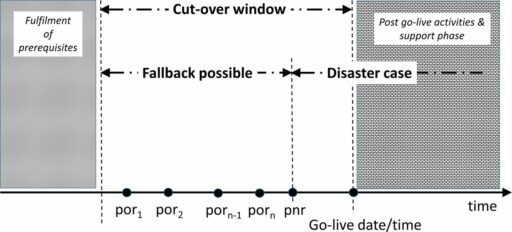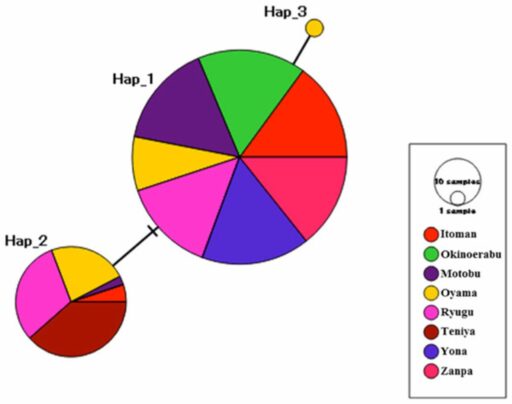Table of Contents
Embarking on the intricate journey of qualitative research requires researchers to navigate a delicate balance between two seemingly opposing forces: objectivity and subjectivity. As we delve into the narratives of participants, we are simultaneously influenced by our own perspectives. In this blog post, we’ll explore the nuances of balancing objectivity and subjectivity, discuss the researcher’s role in shaping outcomes, and offer strategies for maintaining a harmonious equilibrium.
Key Takeaways
- Qualitative research is inherently subjective, and managing this subjectivity is crucial for accurate data interpretation and valuable insights.
- Standardizing data collection methods and incorporating multiple perspectives can mitigate bias and enhance the reliability of qualitative data.
- Identifying themes, consensus, and outlier opinions in qualitative feedback is essential for translating data into actionable insights.
- Challenges such as data overload and complexity can be navigated through effective synthesis processes and acknowledging potential biases.
- Integrating qualitative insights with quantitative data provides a more comprehensive understanding and can lead to more informed decision-making.
Understanding the Spectrum of Subjectivity in Qualitative Research


The Role of the Researcher’s Perspective
The Researcher’s Influence on qualitative research is profound. The choice of questions, interview techniques, and analytical lenses all contribute to the direction and depth of the study. It’s not about undermining the integrity of research but about recognizing the critical role researchers play in shaping both the process and outcomes.
In the Dance of Perspectives, researchers must navigate the interplay between participants’ stories and their own perceptions. Acknowledging the influence of personal experiences, beliefs, and biases is crucial, as they color observations and interpretations. This interplay is not a hindrance but a valuable aspect of qualitative research, offering a rich tapestry of knowledge.
Remember, your perspectives are an asset, enriching the depth of your research. Strive to strike a balance that respects your role as a researcher while honoring the authenticity of your participants’ stories.
Understanding the researcher’s philosophical stance is essential for enhancing the coherence and integrity of the study. It aids in the interpretation of findings, ensuring that readers can place the findings within the appropriate conceptual framework.
Managing Subjectivity: Techniques and Approaches
In the realm of qualitative research, embracing the gray area where personal perspective intersects with participant narratives is crucial. Techniques and analytical lenses contribute to the study’s direction and depth, and acknowledging these perspectives is essential for minimizing undue influence and bias.
Strategies for maintaining balance include:
- Clearly communicate your role in the research process.
- Acknowledge potential biases to foster transparency.
- Employ triangulation by using multiple data sources.
- Embrace reflexivity, allowing for self-awareness and critical reflection.
Balancing objectivity and subjectivity in qualitative research is an art that requires constant awareness and refinement. It’s about finding equilibrium between your personal lens and the pursuit of unbiased understanding.
Embarking on qualitative research means navigating between objectivity and subjectivity. It’s not about eliminating subjectivity but managing it effectively to enrich the research process.
The Impact of Subjectivity on Data Interpretation
The interpretation of qualitative data is inherently subjective, with each researcher bringing their unique perspective to the analysis. The challenge lies in distinguishing personal biases from genuine insights. This subjectivity can lead to varied interpretations of the same data, affecting the reliability and validity of research findings.
The process of interpreting data is as much an art as it is a science, requiring a balance between understanding the nuances of human experience and maintaining methodological rigor.
To mitigate the impact of subjectivity, researchers can employ several strategies:
- Separate Analysis and Interpretation: By disentangling the data analysis from personal interpretation, researchers can more clearly identify data-driven insights.
- Engage with Participant Perspectives: Including the views of participants adds depth to the data and helps validate the researcher’s interpretations.
- Acknowledge and Address Biases: Recognizing one’s own biases and actively working to counteract them is crucial for objective analysis.
While subjectivity cannot be completely eliminated, acknowledging its presence and implementing these strategies can enhance the integrity of qualitative research.
Strategies for Collecting Qualitative Feedback Data


Designing Open-Ended Surveys and Interviews
Open-ended surveys and interviews are pivotal in qualitative research for uncovering rich, detailed insights. Questions are crafted to elicit narratives, opinions, and experiences, providing depth to the study. When designing these tools, it’s essential to ensure questions are clear, unbiased, and allow for a wide range of responses.
- Develop the survey question to be broad enough to capture diverse insights yet focused to maintain relevance to the research topic.
- Place the survey in a strategic location or choose the right moment for the interview to maximize response rates and quality.
- Consider the use of incentives to encourage participation, tailoring them to fit the research type, whether it’s quantitative, qualitative, or mixed methodology.
The key to successful open-ended questions is in their ability to reveal the ‘why’ behind a respondent’s thoughts or actions.
While multiple-choice questions can provide structured data, open-ended questions allow respondents to express their unique perspectives, potentially uncovering new use-cases or insights not previously considered by the research team.
Standardizing Data Collection Methods
Standardizing data collection methods is crucial for ensuring consistency and reliability in qualitative research. Choose a scale that allows for effective analysis, ensuring that responses can be quantified and analyzed using statistical methods aligned with research objectives.
- Evaluate the number of response options, such as:
- Binary scales (yes/no, true/false)
- Likert scales (strongly disagree to strongly agree)
- Semantic differential scales (happy to sad)
- Numerical scales (rating scales from 1 to 5)
- Continuous scales (visual analog scales)
The chosen scale should match the precision needed for the study and facilitate ease of analysis.
It’s essential to define clear criteria for data saturation and seek peer consultation to enhance the research’s validity.
Online tools have made quantitative data collection more accessible, with options like Net Promoter Score (NPS) and Customer Satisfaction (CSAT) surveys. These tools are time-efficient and simplify the process of identifying trends and patterns.
Incorporating Multiple Perspectives in Analysis
In qualitative research, incorporating multiple perspectives is crucial for a comprehensive understanding of the data. This approach counteracts individual biases and adds depth to the analysis. Engaging with a diverse range of viewpoints can reveal patterns and insights that might otherwise be overlooked.
- Triangulation: Combine multiple sources, methods, or perspectives to enhance credibility and reliability.
- Peer Consultation: Seek input from peers for an outsider’s perspective on your analysis.
- Separate Analysis and Interpretation: Distinguish between data-driven insights and personal interpretations.
- Participant Engagement: Actively involve participants to understand their perspectives and enrich interpretations.
Embracing diverse interpretations—both your own and those of your participants—creates a tapestry of knowledge that enriches the field of qualitative research.
Remember to engage in reflexivity, considering how your background and assumptions influence your research. Collaboration with colleagues who bring different perspectives to the table encourages diverse interpretations and minimizes individual biases.
The Benefits and Insights of Qualitative Research


Identifying Themes and Patterns
In qualitative research, the process of identifying themes and patterns is fundamental to understanding the data’s narrative. This involves meticulously combing through transcripts, notes, and recordings to pinpoint recurring elements that reveal the underlying structure of the data. For instance, when analyzing a focus group transcript, one might start by listing broad themes and then delve deeper to provide examples and frequencies of these themes’ emergence.
To illustrate, consider the following list of elements researchers look for when identifying themes:
- Repeating words or phrases
- Trends
- Consensus opinions
- Outlier opinions
By focusing on these elements, researchers can begin to discern the collective voice of the participants, as well as the unique perspectives that may challenge or enrich the dominant narrative.
Once themes are identified, it’s crucial to examine them within the context of the research question. For example, exploring the theme of ‘community engagement’ might reveal its impact on interviewees’ perspectives, or highlighting instances of joy and frustration could provide insights into product experiences. This thematic analysis not only aids in understanding the data but also in constructing a coherent story that aligns with the research objectives.
Understanding Consensus and Outlier Opinions
In qualitative research, consensus and outlier opinions offer a rich tapestry of data that, when analyzed effectively, can reveal deep insights into the collective and individual psyche. Identifying the majority view is crucial, but it is equally important to understand the unique perspectives that diverge from the norm. These outlier opinions can sometimes lead to breakthrough ideas or highlight issues that may not be apparent in the consensus.
The challenge lies in balancing the weight given to consensus versus outlier opinions, ensuring that neither is disproportionately emphasized at the expense of the other.
When using tools like Likert scales, researchers must be mindful of their limitations. For instance, a 5-point scale may not capture the intensity of agreement or disagreement as effectively as a more granular 7-point or 9-point scale. Additionally, cultural and language differences can influence how respondents interpret and respond to these scales.
Here are some considerations for choosing the right Likert scale:
- Odd Likert Scales (3, 5, 7, 9, etc.): Preferred for their midpoint, allowing expression of neutrality.
- Even Likert Scales (4, 6, 8, 10, etc.): Encourage leaning towards an opinion by omitting a neutral option.
- Respondent Characteristics: Select a scale that matches the respondents’ expertise and comfort level.
Researchers must navigate these nuances to ensure that both consensus and outlier opinions are accurately represented and understood.
Translating Qualitative Data into Actionable Insights
The translation of qualitative data into actionable insights is a pivotal step in research that can significantly influence decision-making and strategy formulation. Identifying recurring themes, consensus opinions, and outlier perspectives is essential for understanding the full scope of the data collected. These insights can inform product development, marketing strategies, and customer service improvements.
To effectively translate qualitative feedback, researchers should:
- Analyze repeating words or phrases to detect patterns.
- Quantify keywords to assess their significance.
- Develop programs that convert qualitative responses into quantifiable data, allowing for more sophisticated analysis.
By integrating qualitative findings with quantitative data, researchers can provide a more comprehensive view of their subject matter, leading to more informed decisions and strategic directions.
The challenge lies in the careful crafting of analysis techniques that respect the nuances of qualitative data while still providing clear, actionable outcomes. This often requires a balance between manual interpretation and the use of electronic tools to process data at scale.
Challenges and Solutions in Qualitative Data Analysis


Navigating Data Overload and Complexity
In the realm of qualitative research, data overload can be a daunting challenge. Researchers often find themselves submerged in a sea of text, images, and recordings, struggling to discern what is most pertinent to their study. The task of sifting through this voluminous data to extract meaningful insights is not trivial.
To effectively manage this complexity, it is essential to adopt a systematic approach to data analysis. This involves organizing data into categories, themes, or patterns that can be more easily analyzed.
Here are some steps to consider:
- Data Management: Implement robust data management practices. Utilize software tools that facilitate the organization, coding, and retrieval of data.
- Reflexivity: Engage in reflexivity to mitigate bias. Keep a research journal to document your subjective lens and maintain transparency.
- Chunk Analysis: Break down the data into manageable chunks. Tackle one piece at a time to avoid feeling overwhelmed.
By embracing these strategies, researchers can navigate the complexities of qualitative data, ensuring that critical factors are not overlooked in the analysis process.
Mitigating Bias and Enhancing Objectivity
In the realm of qualitative research, mitigating bias and enhancing objectivity are pivotal to the integrity of the study. Acknowledging personal perspectives while striving to minimize their undue influence is essential. Here are some strategies to consider:
- Data Management: Organize and code data meticulously using software tools, breaking down analysis into manageable chunks.
- Reflexivity: Engage in regular self-examination to understand how your background influences the research.
- Collaboration: Work with colleagues who bring different perspectives, encouraging diverse interpretations.
By implementing these strategies, researchers can counteract individual biases and add depth to their analysis.
Embarking on qualitative research involves balancing the subjective and the objective. While our own narratives influence us, it is crucial to maintain a harmonious equilibrium between these forces. The use of techniques, analytical lenses, and a conscious effort to maintain this balance can contribute significantly to the depth and direction of the study.
Effective Synthesis of Voluminous Data Sets
The real challenge in qualitative research lies in the ability to organize and synthesize large volumes of data. A planning-first approach is crucial for consistency and effectiveness in handling qualitative data. Two important aspects to consider are the development of a systematic plan and the creation of functions to organize text responses.
- Data Overload: Researchers often face the daunting task of sifting through extensive and complex data sets. Starting with a clear plan can help in structuring the analysis process.
- Subjectivity and Bias: It’s essential to strike a balance between subjective interpretation and objective analysis to minimize bias and capture the nuances of the data.
By computing qualitative data electronically, researchers can process information at scale, allowing for a more manageable analysis. Quantifying keywords and developing programs that convert qualitative responses into quantitative data can significantly aid in this process.
Ultimately, the goal is to transform the overwhelming volume of qualitative data into structured insights that can inform decision-making. This often involves integrating both textual and numerical information, which may require innovative strategies during the data visualization phase.
Leveraging Qualitative Data in a Quantitative World


Integrating Qualitative Insights with Statistical Data
In the realm of research, the fusion of qualitative insights with statistical data can illuminate the full spectrum of human experience, providing a more nuanced understanding of the subject matter. Qualitative data, with its rich narratives and detailed descriptions, offers context and depth to the numerical precision of quantitative data.
To effectively integrate these two forms of data, researchers must first identify the repeating words, themes, and patterns within the qualitative feedback. This process often involves manual sifting through individual responses to uncover emerging trends or insights that quantitative data alone may not reveal.
By incorporating qualitative data, researchers can evolve and adapt their research questions and hypotheses, strengthening the foundation of their quantitative research strategy.
Once qualitative themes are established, they can be aligned with quantitative findings to validate hypotheses. For instance, surveys designed to generate quantitative feedback can be informed by qualitative insights, ensuring that the questions asked are both relevant and grounded in actual user experiences.
Here are some key takeaways when integrating qualitative and quantitative research:
- Quantitative data provides the statistics to validate hypotheses.
- Qualitative data adds context to the numbers, revealing why certain trends may be occurring.
- The combination of both types of data can lead to more informed and reliable business decisions.
Balancing Depth and Breadth in Mixed-Methods Research
In the realm of mixed-methods research, the challenge is to harmonize the depth of qualitative insights with the breadth of quantitative analysis. This balance is crucial for a comprehensive understanding of the research subject.
- Depth involves the detailed exploration of qualitative data, capturing the nuances and complexities of human experiences.
- Breadth, on the other hand, refers to the extensive scope of quantitative data, providing a broad overview of patterns and trends.
The key is to ensure that neither approach overshadows the other, allowing each to inform and enhance the findings in a synergistic manner.
By integrating both qualitative and quantitative data, researchers can create a more robust and nuanced picture of their study area. This integration allows for a richer analysis, where the strengths of one method can fill the gaps of the other. For instance, qualitative data can explain the ‘why’ behind the numbers, while quantitative data can lend scale and generalizability to qualitative observations.
Case Studies: Successful Qualitative and Quantitative Integration
The fusion of qualitative and quantitative data can lead to a comprehensive understanding of research subjects. Case studies across various fields demonstrate the power of this integration. For instance, in the realm of data science, the combination of qualitative insights with quantitative analysis has been pivotal in refining algorithms such as the random forest algorithm.
In the context of marketing, integrating customer feedback (qualitative) with conversion rates (quantitative) has led to improved customer experiences and business outcomes. Similarly, SEO strategies often rely on a mix of creative data visualization (qualitative) and analytics data (quantitative) to optimize content and drive traffic.
The synergy between qualitative depth and quantitative breadth provides a nuanced lens through which complex phenomena can be understood and addressed.
To illustrate, consider the following table summarizing a hypothetical study where qualitative feedback was quantified to assess the effectiveness of a new product feature:
| Feature | User Satisfaction (Qualitative) | Usage Increase (Quantitative) |
|---|---|---|
| A | Positive | 20% |
| B | Mixed | 5% |
| C | Negative | -3% |
This table encapsulates how qualitative perceptions can be aligned with quantitative metrics to yield actionable insights. By examining both congruency and incongruency in data, researchers can pinpoint areas of success and those requiring further investigation.
Conclusion
In the intricate dance of qualitative research, we have traversed the spectrum from the overwhelming abundance of subjective data to the nuanced interplay of objectivity and subjectivity. We’ve seen that while qualitative data can be unwieldy and open to interpretation, it is also rich with the potential for deep insights into human experience. The researcher’s journey is one of balance—acknowledging personal biases while striving for a reflective and rigorous analysis. By embracing the gray areas and employing strategies to standardize and validate our methods, we can harness the power of subjective data to inform and enrich our understanding of the world. As we close this discussion, let us remember that the value of qualitative research lies not in the replication of results, but in the unique and meaningful stories it uncovers, guiding us towards more empathetic and effective solutions.
Frequently Asked Questions
How does subjectivity impact the interpretation of qualitative data in research?
Subjectivity impacts qualitative data interpretation by introducing the researcher’s personal biases and perspectives, which can influence how data is collected, analyzed, and presented. Acknowledging and managing subjectivity is crucial for maintaining the integrity of the research.
What techniques can be used to manage subjectivity in qualitative research?
Techniques to manage subjectivity include reflective practices, triangulation, member checking, and engaging multiple analysts. These practices help to balance the researcher’s perspective with the participants’ narratives and ensure a more objective analysis.
What are the benefits of qualitative research?
Qualitative research offers deep insights into participants’ perspectives, identifies themes and patterns, understands consensus and outlier opinions, and translates findings into actionable insights. It emphasizes the subjective nature of knowledge through rich, descriptive accounts.
How can researchers deal with data overload in qualitative analysis?
To handle data overload, researchers can use standardized data collection methods, employ software tools for data management, and break down the analysis into manageable parts. Involving a team for thorough analysis and synthesis can also mitigate the mental load.
How can qualitative data be integrated with quantitative data in research?
Qualitative data can be integrated with quantitative data by using mixed-methods research, where qualitative insights complement statistical data, providing context and depth to numerical findings. Examples include NPS surveys and Big Data analysis with qualitative feedback.
What are some challenges of interpreting qualitative data, and how can they be addressed?
Challenges include the risk of misinterpretation due to biases and the complexity of data. These can be addressed by acknowledging potential biases, standardizing collection methods, and ensuring a thorough analysis process that includes multiple team members.




